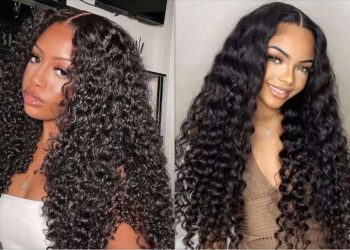Automatic watches are more than just timekeepers; they’re marvels of engineering and, for many, prized pieces of a personal collection. Unlike quartz watches, automatic watches require regular motion to stay wound, which keeps them accurate and ready to wear at a moment’s notice. Proper storage and care for these watches go beyond mere aesthetics—it’s about preserving their intricate movements, safeguarding their value, and ensuring they continue to perform at their best. This is where watch winders come into play, offering a convenient way to keep automatic watches running smoothly even when not worn.
In the watch-collecting community, however, the necessity of watch winders sparks debate. Some collectors swear by them, valuing the convenience and precision a winder provides. Companies like Barrington Watch Winders, known for their quality craftsmanship, offer models designed to meet diverse needs, providing collectors with a reliable way to protect and display their watches. Others see winders as a luxury rather than a necessity and express concerns that continuous winding could increase wear on certain watch components over time. So, do you really need a watch winder? This article will explore both sides of the discussion, helping you decide if a watch winder is the right choice for your collection.
What is a Watch Winder?
A watch winder is a device designed to keep automatic watches wound when they’re not being worn. Automatic watches rely on the natural motion of the wrist to maintain their power, thanks to a small weight inside the watch that moves with each movement of the wearer’s wrist. This movement keeps the mainspring—a key part of the watch’s mechanism—tightly wound, allowing the watch to keep time accurately.
When an automatic watch is left idle for an extended period, it gradually loses power and will eventually stop. A watch winder prevents this by simulating the motion of the wrist. Typically, a watch winder consists of a motorized platform or pad that gently rotates the watch, keeping the mainspring wound and the watch’s mechanisms active. This means that, whenever you’re ready to wear your watch, it’s already set to the correct time and date.
It’s helpful to understand how automatic watches differ from other types of watches. In addition to automatic watches, there are mechanical watches, which require manual winding, and quartz watches, which run on battery power. Mechanical watches, though similar to automatics in their craftsmanship, rely on the wearer to wind them manually to keep them running. Quartz watches, on the other hand, are powered by a battery and don’t require winding at all. So, a watch winder is specifically useful for automatic watches—those that rely on motion to stay wound.
How Does a Watch Winder Work?
At its core, a watch winder functions by rotating an automatic watch to simulate the natural movement of a wrist. This gentle rotation keeps the watch’s mainspring wound, ensuring the watch continues to keep accurate time even when it’s not being worn. The watch is placed in a holder or pad on the winder, which is then powered by a motor to rotate at specific intervals. By mimicking wrist movement, the winder keeps the intricate mechanisms inside the watch active, which is essential for maintaining timekeeping accuracy in automatic watches.
Modern watch winders come with options for customizing rotation settings, allowing you to adjust both the direction and speed of the rotation. Many watches require specific rotation directions—either clockwise, counterclockwise, or a combination of both—to wind effectively. Additionally, watch winders allow for “Turns Per Day” (TPD) adjustments, which control the number of rotations in a 24-hour period. Different watch models have different winding needs, so having these settings helps ensure that each watch receives the optimal level of movement without overwinding or unnecessary strain on its parts. This customization makes watch winders a flexible solution for collectors with multiple automatic watches, each with unique requirements.
Benefits of Using a Watch Winder
A watch winder offers several practical benefits for automatic watch owners, making it more than just a convenience. Let’s explore some of the key advantages.
Convenience: One of the primary benefits of a watch winder is the time and effort it saves from manually winding and resetting watches. For collectors with multiple automatic watches, switching between pieces often means needing to wind and reset those that haven’t been worn in a while. A winder keeps each watch ready to go, allowing you to simply pick it up and wear it without the hassle of adjustments.
Preserving Perpetual Calendar Watches: For watches with a perpetual calendar—a complex mechanism that keeps track of the date, month, and even leap years—resetting can be a time-consuming task. If a perpetual calendar watch stops, resetting it can take several minutes of manual adjustments. A watch winder keeps the time and date settings accurate, eliminating the need to reset the calendar whenever the watch is worn again.
Minimizing Wear and Tear: Over time, the act of manual winding can contribute to wear on the winding mechanism of the watch. A watch winder provides a gentler and more consistent method of winding, reducing the likelihood of over-winding or causing unnecessary stress on the movement. By keeping the watch continuously wound without additional handling, a winder can extend the longevity of your timepieces.
Storage and Display: Beyond functionality, a watch winder can be an elegant addition to a collection. Many watch winders are designed to complement the aesthetic of luxury watches, crafted with high-quality materials and stylish designs. They serve as a tasteful way to store and display watches, adding to the appeal of your collection and offering a secure, organized place for each piece. Whether a single watch or multiple watches, a winder brings both utility and style to your collection, making it an appealing choice for watch enthusiasts.
Potential Downsides of Watch Winders
While watch winders offer several benefits, there are also some potential downsides to consider before adding one to your collection. Understanding these limitations can help ensure you make the best choice for your specific watches.
- Compatibility Issues: Not all automatic watches are compatible with every watch winder. Certain high-end or complex models may require specific winding directions or Turns Per Day (TPD) settings that not all winders provide. Using a winder that isn’t compatible with your watch can lead to ineffective winding or, in rare cases, could even disrupt the movement’s accuracy. It’s essential to verify your watch’s winding requirements and select a winder that supports them to avoid potential issues.
- Quality Concerns: The quality of a watch winder plays a significant role in its safety and effectiveness. Lower-quality winders may lack the precision in rotation speed and direction needed for certain watches, and they can even expose your timepiece to excessive vibration or magnetic fields. Such conditions can affect the accuracy and lifespan of a watch. Investing in a high-quality winder from a reputable brand can help avoid these risks and provide more reliable performance over time.
- Wear on Vintage Watches: Vintage watches, which often have more delicate and less durable movements than modern watches, may not be suited for continuous winding. The constant motion of a winder can place unnecessary wear on older components, potentially leading to faster deterioration. If you have vintage pieces in your collection that aren’t worn regularly, it’s often better to store them safely and wind them manually as needed rather than keeping them on a winder.
By weighing these potential downsides, you can better determine if a watch winder is right for your collection, and if so, which type would offer the best balance of convenience and care for your watches.
Do You Really Need a Watch Winder?
Deciding whether to invest in a watch winder depends largely on the specifics of your watch collection and personal preferences. Here are a few key factors to consider when determining if a winder is right for you.
For collectors with multiple automatic watches, a watch winder can be a convenient addition, keeping each piece ready to wear without needing to reset the time or date. If you frequently rotate between several watches, a winder saves time and keeps every watch in your collection in prime condition, especially those with complex features like perpetual calendars. For those who prefer their watches to always be accurate and ready to wear at a moment’s notice, a winder provides an easy, hands-free solution.
However, if your collection is small or if you enjoy manually winding your watch as part of a daily ritual, a winder may not be essential. Watches that are worn regularly often receive enough wrist motion to stay wound naturally, so an additional winder may offer little benefit. Additionally, if you only own a couple of automatic watches and prefer wearing them consistently, they may never stop running, eliminating the need for a winder.
Ultimately, a watch winder is most beneficial for collectors who have multiple automatic watches or for those who want to avoid the hassle of resetting complex timekeeping functions. If you value convenience and enjoy the look of a well-displayed collection, a winder can be a valuable addition. However, for some watch owners, manual winding may remain a preferred and more cost-effective option.

Choosing the Right Watch Winder
When selecting a watch winder, it’s essential to focus on a few critical factors to ensure it meets the specific needs of your collection. Quality, customization options, and compatibility with different watch models are key aspects to consider, as they’ll impact the winder’s effectiveness and how well it preserves your timepieces.
- Quality Matters: The build quality of a watch winder can directly affect both the safety and performance of your watches. High-quality winders typically use reliable motors and durable materials, ensuring smooth, quiet operation without excessive vibration. Investing in a winder from a reputable brand helps safeguard your watches from the risks associated with lower-quality devices, such as inconsistent rotations or magnetic interference. Brands like Barrington, for example, offer winders known for their precision and quiet operation, making them a trusted choice for collectors.
- Customization Options: Different automatic watches have unique winding requirements, so having customizable settings is essential. Look for winders that allow you to adjust the Turns Per Day (TPD) and rotation direction—clockwise, counterclockwise, or both. These options help ensure that each watch receives the optimal level of movement without overwinding or under-winding, which is particularly important if your collection includes diverse watch models.
- Compatibility with Various Watch Models: Before purchasing a winder, it’s crucial to understand the winding needs of your specific watches. Some complex or vintage models may have unique requirements, so selecting a winder that can meet these needs will help maintain accuracy and longevity. If you own multiple automatic watches, you may also want a winder with multiple slots, allowing you to keep several watches ready to wear at once.
Ultimately, the right watch winder will combine quality craftsmanship, flexible settings, and compatibility with your collection. Brands like Barrington offer a range of options designed to meet the varied needs of watch enthusiasts, providing a balance of style, functionality, and dependability that suits both novice collectors and seasoned connoisseurs.
Conclusion
In summary, watch winders offer a mix of benefits and considerations for automatic watch owners. They provide convenience by keeping watches ready to wear, help preserve the settings on complex timepieces, and offer a stylish display solution for collectors. However, potential downsides include compatibility concerns, the impact of lower-quality winders, and the risk of unnecessary wear on vintage pieces. Ultimately, whether or not a watch winder is necessary depends on your collection’s size, the types of watches you own, and your personal preferences.
For those seeking a reliable, well-crafted watch winder, Barrington Watch Winders offers a range of products designed to meet the needs of both novice and experienced collectors. Since 2009, Barrington has focused on combining functionality, quality, and aesthetic appeal in every model, providing a trustworthy solution for automatic watch enthusiasts.







